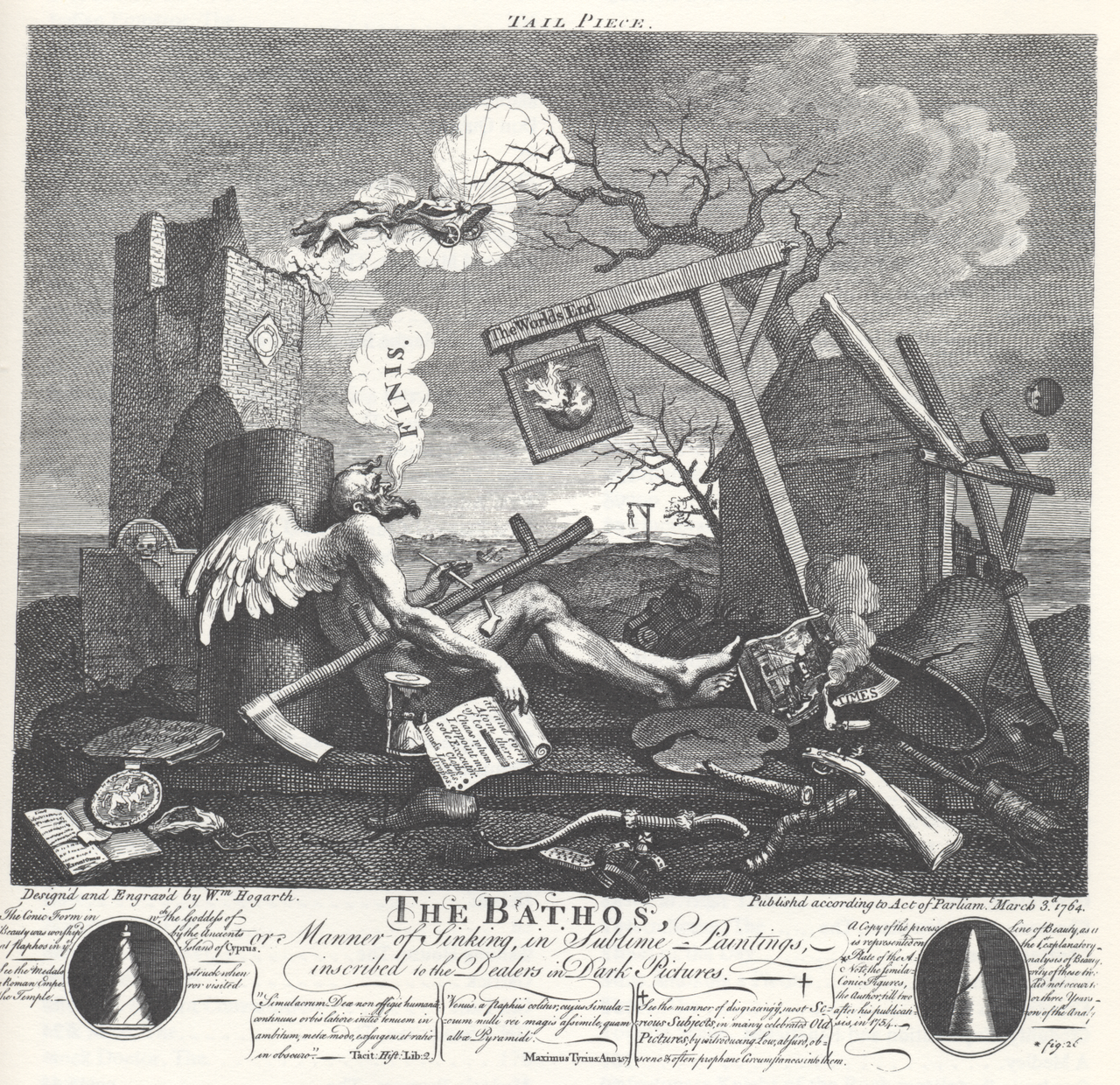A short clip from Double Take, a film by media artist Johan Grimonprez (there are a handful of other clips on YouTube). “They say that if you meet your double, you should kill him.” Hitchcock versus Hitchcock versus the Cold War, with cinematic history folding in on itself. There’s a worthwhile interview with Grimonprez over on the Cinema Scope website with more info.
Tag: art
-
Johan Grimonprez’s Double Take
-
An Italian vision of a scientific Utopia
The science journal Nature reviews the new book Inventing Futurism: The Art and Politics of Artificial Optimism by Christine Poggi. The review itself is a decent synopsis of the Futurist movement in art and literature and the role that modern technology played in shaping European political thought in the early 20th Century. (Note: the Italian Futurist utopian dream devolved rapidly into the very frightening march of fascism, and would eventually become our model for Blade Runner-style sci-fi dystopia…not something to idealize, but worth learning a lesson from)
The Futurists imagined a world governed by electricity. Their electrical fantasies, writes Poggi, take a Utopian turn in their vision and evolve into an orgy of violence. They saw Italy as being “fertilized” by electricity, banishing hunger, poverty, disease and work. Air temperature and ventilation would be controlled automatically, telephones would be wireless, and crops and forests would spring up at speed. But in this world of ease and plenty, fierce competition would arise over superabundant industrial production. War would break out, fought by “small mechanics” whose flesh resembled steel. Deploying “steel elephants” and battery-powered trains from afar, they would wage a thrilling interplanetary war.
-
William Hogarth‘s Final Engraving: The Bathos

William Hogarth’s final engraving, a self-satirical illustration of the end of time, parodizing the bathetic imagery in his contemporaries’ works. I admire a guy who can go out on a bit of pessimist humor. (see also this explication of the print)
-
Looking at the Stars Always Makes Me Dream As
Looking at the stars always makes me dream, as simply as I dream over the black dots representing towns and villages on a map. Why? I ask myself, shouldn’t the shining dots of the sky be as accessible as the black dots on the map of France? Just as we take a train to get to Tarascon or Rouen, we take death to reach a star. We cannot get to a star while we are alive any more than we can take the train when we are dead. So to me it seems possible that cholera, tuberculosis and cancer are the celestial means of locomotion. Just as steamboats, buses and railways are the terrestrial means. To die quietly of old age, would be to go there on foot. Vincent van Gogh, quoted on Roger Ebert’s Journal (itself a great read)
-
Revolver: Looping Animation Shorts
Revolver, a brilliant series of short looping animations by Jonas Odell (codirected with Stig Bergkvist, Marti Ekstrand & Lars Olsson). I loved these when they ran serialized in the early days of Hotwired.com’s Renaissance 2.0 / Kino section, circa 1995, and hastily squirreled away all of the QuickTime .mov’s from the site for archiving. Benefit of having the .mov’s? You could have all of them open and playing simultaneously!
-
Cartoon-y 19th Century Fukuoka Woodblock

I love Edo-era art and cartooning. Hard to imagine doing this with a woodblock! Image found on the always-great BibliOdyssey, also available on Flickr.
-
Vrgb VHS Visual Music Composition n.002
Some glitchy VCR-powered goodness. Via Rhizome.
-
Db We Used to Say Pirating I Mean the Term
DB: We used to say “pirating.” I mean, the term pirating was used for my early work.
CA: Was it really?
DB: Yeah. For example, when I started, there were no home-recording units. There was no TiVo. There was nothing like that.
CA: I must have been very difficult for you to get that footage.
DB: It was. There was no way to get the footage I needed directly. I had to find people inside the industry who believed in my artwork and were willing to get images out to me. So they called me a “pirateer” of imagery. That had a very romantic sound to it: “Oh, she’s the one who pirated imagery from television.”
Maybe this is the real difference between our generations. In pirating, originally, there was no way to talk back to the media. That’s why I did it. The stuff was coming one way at you, and there was no way to arrest it, stop the action, divert it, alter the vocabulary, or change the syntax.
From Do It 2, a conversation between Dara Birnbaum and Cory Arcangel. Artforum International XLVII, No. 7, p198 -
Certainly Knowledge Comes from Traditional
Certainly, knowledge comes from traditional sources, such as school and books, but it also comes from non-traditional sources like experiences and conversations. Personally, I’m fond of the immersion technique when it comes to learning.
[…]
I think one of the most important things that my career path has taught me is that it is it very important to respect all kinds of art, whether I like it or not. It is not the difference between good or bad art, it is that art comes in different forms and qualities. I like to think of art as a document or reflection of our time. The more able an artist is to make a clear statement, the more lasting it will become. Artists often project ideas on a piece of work, but I think a work’s impact is stronger when a artist can project a broader conceptual belief.
[…]
It takes a second act to understand the first. My interest in art, architecture and music are all constantly informing my work. It is about submerging yourself in something you believe in. I guess the main function of a first act is to flush out ideas – to experiment and refine wheat I think my work should be. A second act allows for self-imposed rules and regulations. It gives me the ability to say no to ideas that are not genuine and complete. I often think of the legendary story of Johnny Cash walking into Sun Studio to record gospel songs. Sam Phillips told him to “go out and sin a little and then come back.” He came back “experienced” and became a legend.
Scott Ingram, Work Ethic. ART LIES no. 61, p65. -
Étienne-Jules Marey
Pioneer of medical instruments, photography, and cinema. Took some very interesting early photographs in his research of animal locomotion and physionomy, which led to his successor Muybridge’s famous collections of plates.
